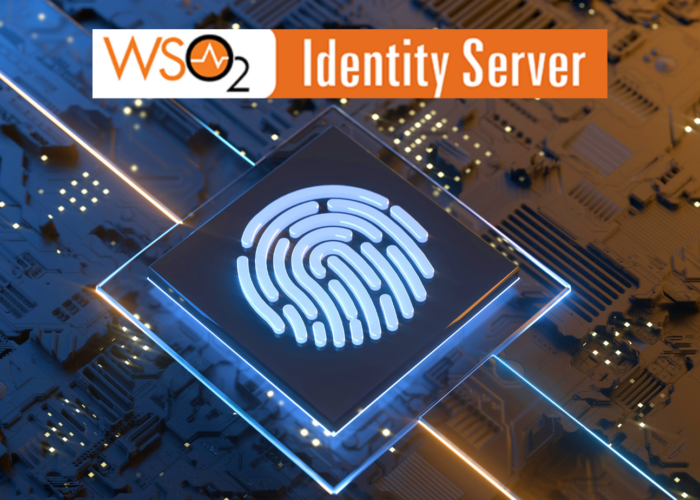It is not difficult to understand how important it is for a company today to implement an identity and access management strategy. Adapting to a world in which all companies compete with each other to gain the lead makes it necessary to have the best systems, greater functionality in the techniques used and, above all, to have a correct protection of business information.
IAM strategies ensure that those who have access to the company’s IT environment are people who comply with the company’s requirements; that is, that they are following its policies and are part of it.
-This post may interest you: “WSO2 Identity Server, the next step in IAM solutions”-
This control over business information is not only necessary as a form of security, but it is also useful to measure the level of productivity of each employee and be able to know their commitment to the company.
Identity and Access Management
An Identity and Access Management (IAM) strategy is a system whose technology is responsible for managing the income of users or individuals who are part of a collective or, in this case, of a company.
Its primary function is to identify these users. Then, when their data is part of the system, a series of parameters are set that control how far they can have access within a company. This way, while some employees will be authorized to manage some data, others will be able to know a deeper level of business information.
All identity access management technology automatically administers the different permissions for each employee. That’s why it makes the operations carried out within a company more transparent and secure.
Aspects to consider for your IAM strategy
When applying an IAM strategy, it is vital to take into account a series of aspects related to systems integration. This refers to the process by which the data located in the technology used until now will pass to a new one that, in this case, is identity and access management.
These aspects can be summarized in three essential points.
Data Integration
It is one of the most common and used methods to move data from the source system to the identity access management strategy. This requires some guidelines such as compatibility between both systems and hashing functions. Also, it is vital that firewall policies do not restrict the transition.
Other aspects that must be considered for data integration to be complete include the company’s applications or services. All of them must be connected to the destination system. Also, if the problem of multiple identities for the same user arises, it must be solved.
-Read more: “Identity management, trends, and best practices”-
Data integration can solve these problems manually or automatically. However, the former requires hiring an expert in the area who knows how the new identity and access management strategy will operate.
Identity Federation
It is another of the strategies for the transition between systems. It allows users to use accounts located in the target system and so all information and identity management is managed correctly.
To implement this strategy, the target system sends a new password which the user must start using. The primary challenge for this implementation involves the abandonment of the previous system with all its variants, as it is prevalent to return sporadically.
Dismantling the previously used system is a good option in these cases. To do this, users must be notified and it must be explained how it works and what the particularities of the new one are.
-Find out more: “Cybersecurity in the digital transformation”-
Data Migration
Migrating data from one system to another is an effective way that, by its nature within a company, can be done in two ways: through applications or the data warehouse.
In the first case, the entire process of exporting or importing applications can be done using API programming or a user interface, or even both at the same time. As far as warehouses are concerned, they usually have mechanisms to facilitate migration.
However, some aspects should be considered, such as the migration of confidential information or the passwords used by different users. Data that is encrypted also plays an important role: it is necessary to know if they are compatible with the new system.
5 steps to create your identity and access management (IAM) strategy
Building a successful identity and access management (IAM) strategy requires a systematic and comprehensive approach. Here are 5 steps to build your IAM strategy:
1. Define your IAM objectives
The first step in building your IAM strategy is to define your objectives. This involves identifying your organization’s business goals and how IAM can support them. Examples of IAM objectives include ensuring compliance with regulations, reducing the risk of data breaches, and improving user productivity. By determining your objectives, you can prioritise your IAM efforts and focus on the capabilities that will deliver the greatest value.
2. Inventory your assets and users
Once you have defined your IAM objectives, the next step is to take an inventory of all the IT assets and resources that need protection, as well as the users who need access to these resources. This includes everything from software applications and data repositories to hardware devices and network resources. By conducting this inventory, you can develop a complete picture of your IAM needs and determine the resources that require the strongest protections.
3. Develop IAM policies
With your objectives and inventory in mind, the next step is to create IAM policies and procedures. These policies should be aligned with your organization’s objectives and industry standards. They should cover all aspects of IAM, including password policies, access control policies, and user provisioning and de-provisioning policies. Policies should be documented, communicated to stakeholders, and regularly reviewed and updated to ensure they remain relevant and effective.
4. Choose IAM technologies/vendors
Once you have defined your IAM policies, the next step is to select IAM technologies that align with your organisation’s specific requirements and policies. This may include tools for authentication, authorization, and identity governance. IAM technologies can include single sign-on (SSO) solutions, multi-factor authentication (MFA), identity and access governance (IAG) solutions, and identity and access administration (IAA) tools. Your choice of technologies should be based on your organisation’s unique requirements, such as scalability, integration, and user experience.
5.Test and refine your IAM strategy
After you have defined your IAM policies and chosen your IAM technologies, the final step is to test your IAM strategy in a controlled environment. This testing should involve both IT staff and end-users, and should cover all aspects of IAM, including authentication, authorization, and user provisioning. Based on feedback from testing, you should refine your IAM strategy, making any necessary adjustments to ensure it is effective, efficient, and aligned with your organization’s business objectives.
By following these steps, you can implement an effective IAM solution that helps protect your organisation’s resources and improves efficiency.
Conclusion
When implementing an access control and identity management strategy, it is necessary to have a solution that guarantees that it will work.
If you are determined to start with an IAM strategy, Chakray can advise you in the best possible way, contact us!








